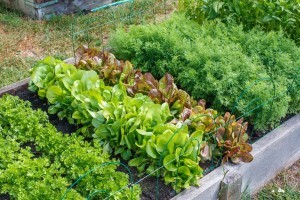 With all the extra time spent at home and uncertainty with COVID-19, now is the perfect time to be planting a victory garden.
With all the extra time spent at home and uncertainty with COVID-19, now is the perfect time to be planting a victory garden.
Victory gardens were dug during World War I and World War II as a way to supplement rations and to raise morale among citizens. It was a way to feel like you were contributing to society during the uneasy time of the war. You can find old war posters encouraging people to grow food with sayings like "Sow the seeds of victory! Plant and raise your own vegetables."
The COVID-19 pandemic has put a lot of people in difficult positions whether they have been laid off, have to homeschool their children while working from home, or having to work in the stressful environment of a frontline job. People are stressed out. Spending time with your hands in some dirt is a great way to relieve stress for many people.
It can be so satisfying to grow your own food even if it is just one easy crop. If you are new to growing food, start with just a couple things. You can grow things in pots, in a 4x4 ft bed or, of course just straight in the ground. If you live in apartment you can grow food in containers. If you don't even have room for that, you can grow sprouts on your kitchen counter!
As many of us here on Thriftyfun know, growing your own food can help cut your food budget tremendously, especially if you know how to preserve your crop by canning, freezing, or drying.
Uprising Seeds has a program called Grow It Forward that allows people with a little extra money to buy seeds for someone who doesn't. This link to were you can get a bundle of 5 seed packets for free (actually they have to charge you $1 as required by their shipping service).
I have started planting my garden and have gotten my kids involved with helping in the yard. It is a great way to get out of the house and away from the screens. Who else is growing a victory garden this year? What are you growing?
This page contains the following solutions.
One of our members mentioned that she now considers her patio garden a Victory Garden. Victory gardens, also called war gardens or food gardens for defense, were vegetable, fruit, and herb gardens planted at private residences in the United States, Canada, and United Kingdom during World War I and World War II.
During WWII, Britain and the United States pushed their citizens to plant "victory gardens." These gardens were marketed to help the war effort by reducing the demand for food on the country (people grew their own instead of purchasing it), thus reducing the cost of food for the troops.